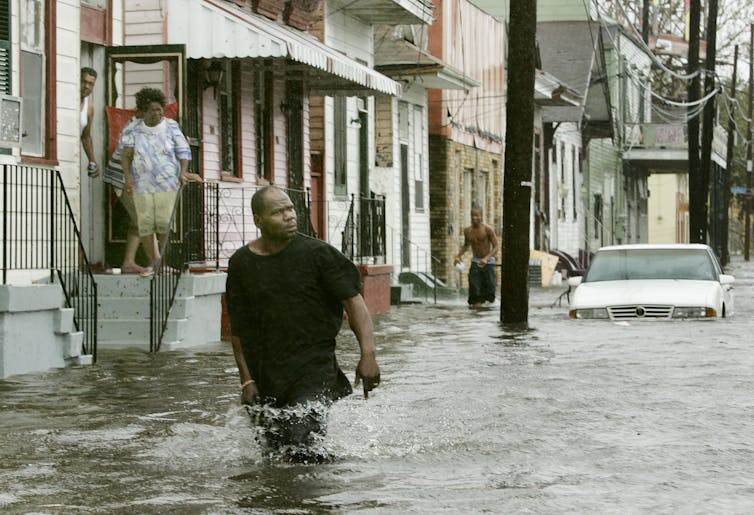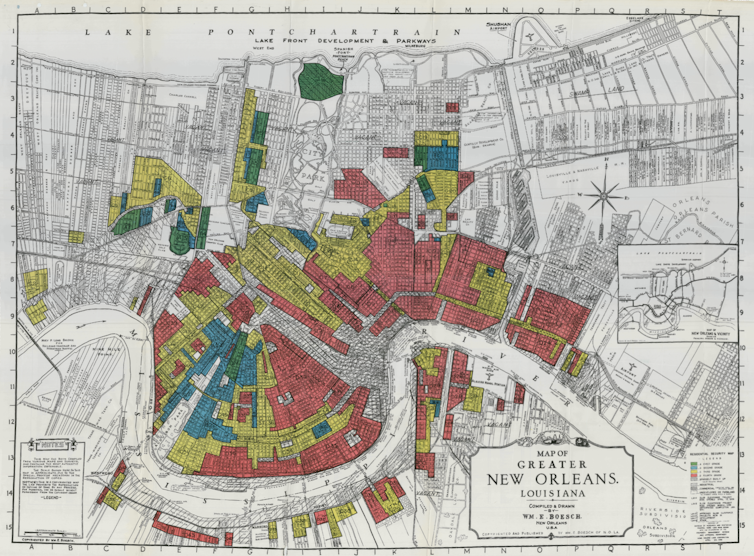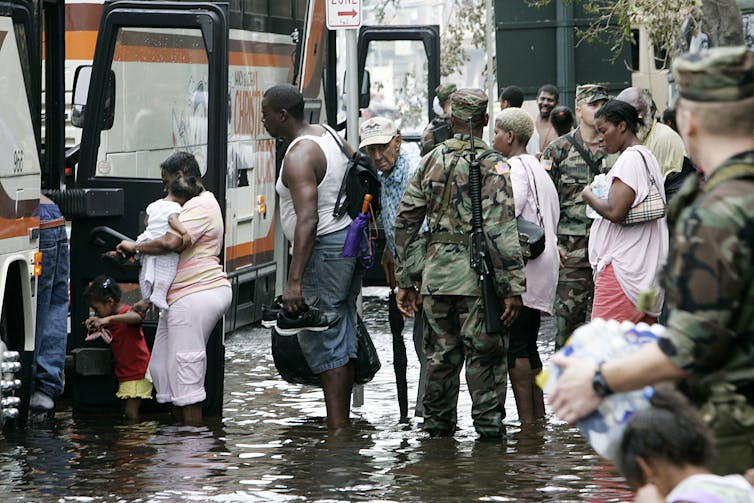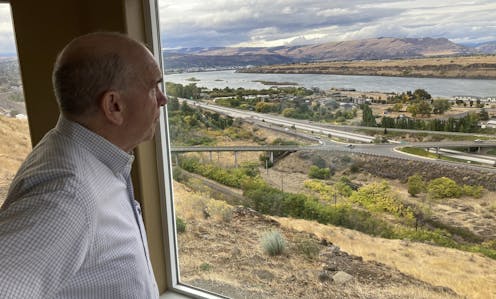Source: The Conversation – USA (3) – By Perin Gürel, Associate professor of American Studies, University of Notre Dame

Fear of reprisals from the Trump administration has made many people cautious about expressing their opinions. Fired federal workers are asking not to be quoted by their name, for fear of losing housing. Business leaders are concerned about harm to their companies. Universities are changing their curricula, and scholars are self censoring.
But one group has refused to back down is the hosts of America’s late night comedy shows.
Jon Stewart and the rest of The Daily Show team, for example, have been scathing in their coverage of the Epstein case. John Oliver continues to amass colorful analogies for describing the president and his actions. After the “Late Show” was canceled, ostensibly due to financial reasons, host Stephen Colbert was defiant: “They made one mistake – they left me alive!”
We may think of being loud, persistent, and edgy as the modern comedians’ job. However, unrelenting, critical humor has a long history in folklore.
I’m a scholar who examines the intersections between culture and politics and I teach a class on “Humor and Power.” A timeless folktale, known as “The Bird Indifferent to Pain,” can help us understand why comedy fans enjoy the annoying persistence of the jester, and explain why this trope has endured across cultures for centuries.
The invincible rooster
“The Bird Indifferent to Pain” belongs to a genre known as “formula tales.” Such tales consist of repeated patterns or chains of events, often with rhymes weaving through them. “The Gingerbread Man” captures this style perfectly with its infectious, teasing rhyme – “Run, run, run as fast as you can…”
“The Bird Indifferent to Pain” also stars a persistent and irritating creature. In most versions, a bird – often a rooster – angers a master or king for singing too loudly or saying the wrong things. The king comes up with elaborate punishments, but the bird always seems indifferent to them, responding to each move with an increasingly defiant and sometimes vulgar rhyme. At the end, the king cooks and eats the rooster, but the bird flies unharmed out of his body, rhyming and singing ever more.
Because folklore is shared casually across cultures and languages, it’s hard to tell when and where this tale first originated. However, folklorists have identified versions all over the world, from Tajikistan in Central Asia to India and Sri Lanka in South Asia, as well as Sudan in northeast Africa.
Armenia’s famous poet Hovhannes Tumanyan collected one version of this tale, which he titled “Anhaght Aklore” or “The Invincible Rooster.” In this version, a rooster finds a gold coin, and boasts about it from the rooftop: “Cock-a-doodle-doo, I’ve found gold!” When the king’s servants take the gold, the rooster continues crowing defiantly: “Cock-a-doodle-doo … the king lives on my account!” Frustrated, the king orders his servants to return the money. But the rooster still won’t shut up: “The king got scared of me!”
Finally, the king orders him slaughtered for dinner. “The king has invited me to his palace!” the rooster boasts. While he’s cooked, he claims the king is treating him to “a hot bath.” Served as the main course, he crows, “I’m dining with the king!”
The tale reaches its climax when the rooster, now in the king’s belly, complains about the darkness. The king, driven to fury by the persistent voice, orders his servants to cut open his own stomach. The rooster escapes and flies to the rooftops, crowing triumphantly once more: “Cock-a-doodle-doo!”
Tumanyan doesn’t tell us what happens to the king after that.
My great-grandmother told us a Turkish version of this tale, featuring a rooster defying his “bey,” or master, in the 1980s. Her rooster crowed in rhyming couplets and used some naughty words to describe the master’s digestive system. Plus, in her version, the master’s behind – and not his stomach – tore open during the bird’s escape. We were obsessed with this story and begged her to tell it over and over.
The power of persistent irritation
What makes this tale, and its many variations, so compelling across languages and centuries? Why do so many cultures enjoy the rooster’s humorous defiance and literal indifference to punishment?
In our case, as children, we were drawn in by the rhythm of repetition and rhyme. The rooster’s colorful language held a delightful sense of transgression. Children also often identify with animals because of a shared vulnerability to adults’ power. Therefore, it is significant that the bird, the weaker of the two parties, survives the ordeal, whereas the master’s fate is uncertain. But the rooster doesn’t merely survive – he thrives and keeps on squawking. This is a story of hope.
In fact, when I told Tumanyan’s version to my 6-year-old son, he said he loved the rooster’s optimism.
Modern American popular culture contains many jocular characters that resemble this folkloric bird, who is delightfully impervious to pain, from cartoon characters such as the Road Runner – an actual bird – to the foulmouthed, self-regenerating antihero Deadpool.
Today’s political comedians, I argue, are using the rooster’s tactics as well.
Release or resistance?
Debates about political humor often circle back to its purpose. Scholars debate whether anti-authoritarian humor is just a coping mechanism, or whether can it spark change.
Psychologist Sigmund Freud believed humor’s main function was “release”: jokes offered a way to reveal our unacceptable urges in a socially acceptable way. A mean joke, for example, allowed its teller to express aggression without risking serious repercussions.
Philosophers Theodor Adorno and Max Horkheimer argued that humor in corporate capitalist media was a mere safety valve, siphoning off protest and releasing righteous outrage as laughter.
Anthropologist James Scott, however, gives jokesters more political credit. In his 1992 book “Domination and the Arts of Resistance,” Scott agreed that authorities allow some dissident humor as a safety valve. But he also identified a powerful “imaginative function” in humorous resistance. Humor, he claimed, can help people envision alternatives to the status quo.
Scott pointed out that release and resistance need not be mutually exclusive. Instead of reducing the chance of actual rebellion, comedy could serve as practice for it.
Authorities do perceive some danger in comedians’ output. In countries with fewer free speech protections, comedians may face more serious repercussions than a stern tweet.
In the case of Colbert, President Donald Trump’s gleeful response to the show’s cancellation, and his suggestion that others will be “next up,” shows just how seriously some political figures take comedic critique. At the very least, they are irritated.
And the story of the “Bird Indifferent to Pain” reminds us that sometimes the best a jokester can do is to keep irritating the bowels of the system, singing all the way.
![]()
Perin Gürel does not work for, consult, own shares in or receive funding from any company or organization that would benefit from this article, and has disclosed no relevant affiliations beyond their academic appointment.
– ref. What an old folktale can teach us about the ‘annoying persistence’ of political comedians – https://theconversation.com/what-an-old-folktale-can-teach-us-about-the-annoying-persistence-of-political-comedians-262860




















